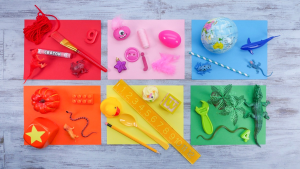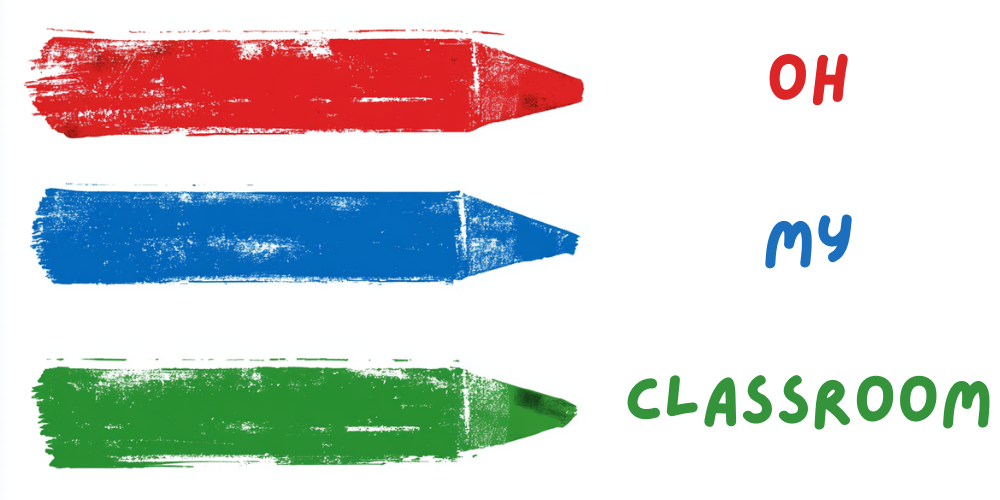At the tender age of two, their minds are like sponges, soaking up knowledge and experiences at an astonishing rate.
While it’s easy to resort to passive screen time or standard toys, there are countless engaging activities that can actively promote brain development in two-year-olds.
We have curated a list of exciting Brain Development Activities for 2 Year Olds.
Sensory Exploration: Messy Play with Homemade Gooey Slime

One of the best ways to engage a two-year-old’s brain is through sensory exploration. Create a fun and stimulating activity by making homemade gooey slime. Mix cornstarch, water, and food coloring to create a slimy, textured substance. Let your little one dive in and explore the gooey sensation, encouraging them to touch, squish, and mold the slime with their hands.
Related: 20 Easy and Fun Messy Play Ideas for Toddlers
Shape Sorting Fun: Match and Sort with Foam Shapes

Shape sorting is an excellent activity for developing a child’s cognitive skills and problem-solving abilities. Cut out colorful foam shapes such as circles, squares, triangles, and stars. Give your child a sorting tray or a large piece of cardboard with corresponding shapes drawn on it. Encourage them to match the foam shapes with their corresponding outlines. As they successfully match the shapes, praise their achievements and provide positive reinforcement.
Related: 20 Preschool Goals for 3 – 5 Year Olds
Music and Movement: Dancing to the Beat

Music and movement play a crucial role in brain development and coordination for toddlers. Create a lively dance party in your living room by playing their favorite upbeat tunes. Encourage your child to move their body, sway, jump, and twirl to the rhythm of the music. Dancing enhances their gross motor skills, spatial awareness, and coordination. It also fosters their sense of rhythm and self-expression. Join in the fun and show off your dance moves too.
Imaginative Play: Building Forts with Blankets and Pillows

Imaginative play is vital for a child’s cognitive and social development. Encourage your little one’s creativity by building forts using blankets and pillows. Create a cozy space where they can retreat into their own imaginative world. Let them participate in constructing the fort, arranging the pillows, and draping the blankets. They can use their fort as a pretend house, a secret hideaway, or a spaceship ready for an adventure.
Nature Walk and Scavenger Hunt: Exploring the Outdoors

Exploring nature not only stimulates a child’s senses but also encourages their curiosity and love for the world around them. Take your two-year-old on a nature walk in your backyard, a local park, or a nature trail. Create a simple scavenger hunt by making a list of natural objects they can find, such as leaves, rocks, flowers, or sticks. Encourage them to observe their surroundings, collect the items on the list, and discuss their findings.
Puzzling Fun: Wooden Block Puzzle Challenge

Puzzles are excellent brain teasers for toddlers as they encourage problem-solving, hand-eye coordination, and spatial reasoning. Introduce your two-year-old to a set of wooden block puzzles specifically designed for their age group. Start with simpler puzzles featuring larger pieces and gradually increase the complexity as they gain confidence. Guide them in fitting the blocks into their respective spaces and celebrate their accomplishments.
Colorful Creations: Finger Painting Masterpieces

Artistic activities are not only fun but also enhance a child’s creativity, fine motor skills, and sensory exploration. Finger painting is a mess-free and exciting way for two-year-olds to express themselves. Set up a designated area with large sheets of paper or a washable art mat. Provide non-toxic finger paints in vibrant colors and let your child unleash their imagination. Encourage them to experiment with different finger movements, mix colors, and create their own unique artwork. Celebrate their creativity and display their masterpieces proudly to boost their self-esteem.
Storytime Adventures: Interactive Book Reading

Reading is an essential activity for brain development and language skills. Make storytime more engaging by choosing interactive books that allow your child to participate actively. Look for books with flaps to lift, touch-and-feel elements, or pop-up surprises. As you read, encourage your child to point out pictures, imitate animal sounds, or repeat simple words and phrases. Engaging their senses during storytelling stimulates their language acquisition, comprehension, and cognitive development. Enjoy this special bonding time and ignite a love for reading from an early age.
Sorting Sensation: Household Objects Sorting Game

Transform everyday household objects into a fun sorting game that challenges your child’s cognitive abilities. Gather a variety of safe and child-friendly objects, such as spoons, socks, toy cars, and building blocks. Create different sorting categories, such as color, shape, size, or texture, using trays or containers. Invite your child to sort the objects into their corresponding categories.
Sensible Sensations: Sensory Bin Exploration

Sensory bins are a fantastic way to engage a two-year-old’s senses and promote cognitive development. Fill a shallow container or a large plastic bin with a base material such as rice, beans, or colored pasta. Add various objects like plastic animals, measuring cups, or textured toys to the bin. Encourage your child to explore the sensory bin by touching, scooping, pouring, and manipulating the objects within it.
Shape and Color Hunt: Indoor Treasure Hunt

Create an exciting indoor treasure hunt that focuses on shapes and colors. Cut out shapes of different colors from construction paper and hide them around the house. Provide your child with a basket or a bag and ask them to find specific shapes or colors according to the clues you provide. For example, you could say, “Find something blue and shaped like a circle.”
Building Bridges: Block Tower Construction

Building towers using blocks is not only an entertaining activity but also promotes problem-solving, spatial reasoning, and fine motor skills. Provide your child with a variety of building blocks and challenge them to build the tallest tower possible. Encourage them to experiment with different block arrangements, sizes, and stacking techniques. As they construct their tower, discuss concepts like stability, balance, and height.
Counting Fun: Number Recognition with Counting Toys

Introduce your two-year-old to the world of numbers through a counting activity using colorful counting toys. Gather small objects like buttons, plastic animals, or toy cars. Place a certain number of objects in front of your child and ask them to count them out loud. Encourage them to touch and move each object as they count. Gradually increase the number of objects as they become more comfortable with counting. Celebrate their counting accomplishments and cheer them on as they progress.
Sensory Science: DIY Sensory Bottles

Sensory bottles are captivating and calming tools that engage a child’s visual and auditory senses. Create DIY sensory bottles by filling clear plastic bottles with various materials like water, glitter, colorful beads, or small buttons. Secure the bottles tightly to avoid any spills. Encourage your child to shake, roll, and observe the mesmerizing patterns and sounds created by the materials inside.
Nature’s Palette: Leaf Collage Art

Combine nature exploration and artistic expression with a leaf collage art activity. Take your child on a nature walk to collect a variety of leaves in different shapes, sizes, and colors. Provide them with a large piece of paper, glue, and markers. Encourage them to arrange and glue the leaves onto the paper to create their own leaf collage. As they work, discuss the different leaf characteristics, such as veins, colors, and textures.
DIY Sensory Playdough

Engage your child’s senses and boost their fine motor skills with homemade play dough. Create a simple play dough recipe using flour, salt, water, and food coloring. Involve your little one in the process of making the play dough, allowing them to mix and knead the ingredients (under supervision). Once the play dough is ready, encourage your child to explore its texture, mold it into different shapes, and use cookie cutters or small toys to create imprints.
Picture Puzzles: Family Photo Puzzle Fun

Turn cherished family photos into personalized puzzles for your two-year-old. Print out a few family pictures and glue them onto sturdy cardboard. Cut each photo into a few large pieces to create puzzles. Sit with your child and guide them as they try to assemble the puzzles. Engage in conversation about the people and memories depicted in the photos.
Shape Shadows: Shadow Tracing Game

Explore the concept of shadows and shapes with a simple shadow tracing game. Choose a sunny spot indoors or outdoors, where you can cast clear shadows. Place objects with distinct shapes on a flat surface, such as a table or sidewalk. Encourage your child to trace the shadows of the objects using chalk or washable markers. Help them identify the shapes and talk about their characteristics. This activity promotes shape recognition, hand-eye coordination, and observational skills. Encourage your child to get creative and draw their own shadow shapes as well.
ABC Hunt: Alphabet Scavenger Hunt

Transform learning the alphabet into an exciting scavenger hunt. Write down the letters of the alphabet on small pieces of paper or index cards. Hide the letter cards around a designated area, such as your living room or backyard. Provide your child with a basket or a bag and encourage them to find the hidden letters. As they discover each letter, ask them to identify it and name objects or words that start with that letter. This activity promotes letter recognition, language development, and observation skills. Celebrate their letter discoveries and acknowledge their efforts.
Kitchen Concoctions: Sensory Baking Experience

Introduce your child to the world of sensory baking by involving them in simple kitchen activities. Choose a kid-friendly recipe like mixing pancake batter, kneading dough, or decorating cookies. Let them touch and feel the ingredients, smell the aromas, and observe the transformations that occur during the baking process. Talk about the different textures, colors, and tastes they encounter. together.
